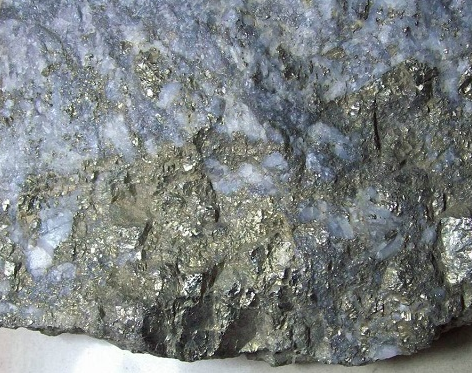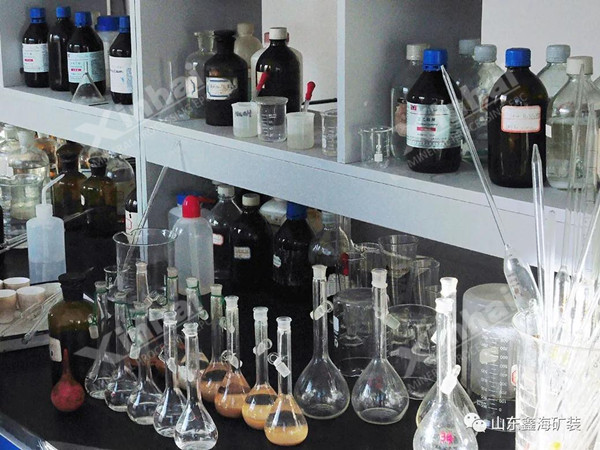There are many kinds of symbiotic and associated minerals of gold, and arsenic is one of them. The gold in arsenic-containing gold ores is often encapsulated as fine grains, which makes gold leaching difficult. Therefore, for arsenic-containing gold ores, arsenic removal is the key. So how to remove arsenic? Using the right pretreatment method is the key.

Common arsenic removal methods consist of three pretreatment methods: oxidizing roasting, wet chemistry, and bacterial oxidation. The following will introduce these methods one by one.
Oxidizing roasting is a commonly used method for processing gold-bearing sulfide ores. The purpose of roasting is to decompose sulfides to expose gold particles, and to oxidize arsenic and sulfur to volatilize and remove them, thus providing good conditions for the next step of gold cyanidation leaching. However, the roasting process will release a large amount of toxic gases such as SO2 and As2O3 during the roasting process. Although the sulfur oxides and arsenic oxides produced by roasting are currently recovered, there are still some low-concentration gaseous sulfur oxides and arsenic oxides discharged and polluting the environment.
Oxidation and sulfation roasting are widely used to treat sulfide ores containing Fe, Cu, n, etc. to convert these metals into soluble metal oxides or sulfates, to make iron into insoluble iron oxides, and to burn carbonaceous materials, which makes the As, and S volatilize in gaseous state.
The method mainly includes two methods: atmospheric pressure alkali leaching pretreatment and thermal pressing chemical pretreatment.
Atmospheric pressure alkaline leaching pretreatment method
Atmospheric-pressure alkaline leaching pretreatment is a method using alkaline medium to pretreat minerals under normal pressure. However, the physical and chemical comprehensive separation methods are mostly used. Grinding-leaching operation at the same time and tower grinding- leaching machine are used to finely grind the arsenic-containing refractory gold ore, and then enhanced pretreatment agitation tank is subjected to enhanced alkali leaching pretreatment at normal temperature and pressure, so as to remove arsenic and sulphide or fully dissociate gold and sulfide, and then cyanidation is carried out to achieve high-efficiency gold extraction.
More than 10 typical arsenic-containing refractory gold ores in China were pretreated under the conditions of slurry concentration of 40% and ambient temperature of -4-35°C. The gold leaching rate increased from 8% to 20% before pretreatment to 93%-98%.
Thermal press chemical pretreatment
The thermal pressing chemical pretreatment method, also known as the pressure leaching method, has the advantages of short process, high arsenic leaching rate, short leaching time and no toxic substances such as SO2. It is an effective means of pretreatment of sulfur, arsenic gold ores or gold concentrates. In an acidic medium, the main reactions of high temperature oxidation of sulfides, iron compounds and arsenides consist of three forms: respectively, all sulfides are oxidized to sulfur or sulfate, Fe2+ produced in the reaction process is oxidized to Fe3+, and arsenic is oxidized to arsenate.

The 3 types of bacteria that is used in bacterial pre-oxidation treatment method can be thiobacillus ferrooxidans, thiobacillus thiooxidans, leptospira ferrooxidans, etc. In general, the combination of two species and three species is used for leaching. With biological oxidation pretreatment, the gold leaching rate is high. After bacterial oxidation pretreatment, the gold ore has a high arsenic removal rate and a good weight loss rate. The gold cyanide leaching rate of the ore is remarkable. But bacterial oxidation has the disadvantage of long treatment period.
The three arsenic removal methods described above are called pretreatment. Only after pretreatment can arsenic be removed from arsenic-containing gold ores, making gold leaching successful, so as to achieve the purpose of gold extraction. How to choose the proper pretreatment methods for your gold ore depends on professional beneficiation test.